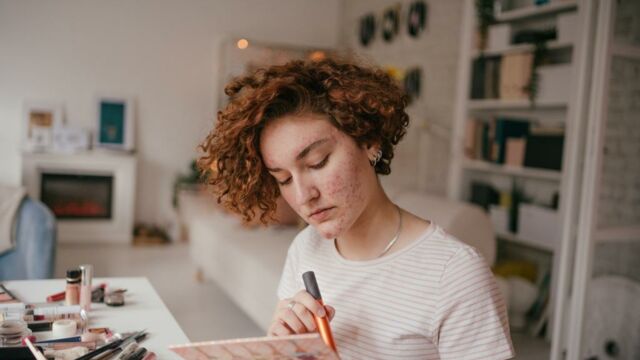Unfortunately, for many of us, acne is not something that we said goodbye to in our teens despite our best wishes and good intentions. Acne can be caused by many different factors, from hormones to diet to bad makeup habits, and can reappear at any point in a person's life.
Discover our latest podcast
But having acne doesn't mean you need to hide away until you heal. Nor does it mean you can't create a flawless base for your makeup if you choose to wear it. To help you in overcoming the challenges of applying makeup to oily and acne-prone skin, we've created the perfect make-up application routine:
1.Prep and prime
The first and most important step in any makeup routine is preparing the skin well. This especially applies to acne-prone skin types which have a tendency to be a little oily or flaky which upsets the texture and longevity of your make-up. Despite common misconceptions, acne-prone and oily skin types need moisture.For these skin types, thin layers of gel or milky serums, moisturisers and primers (instead of heavy creams or thick oils) will leave your face feeling clean, plump and glowy, without adding to your over-production of oil or leaving you matte and lifeless.
Look for ingredients like hyaluronic acid, glycerin or snail mucin, which are all humectants which attract water into your epidermis for a juicy appearance.
2. SPF up
No skin-prep routine is complete without sun protection. A light fluid SPF is best suited to acne-prone and oily skin types. Mineral SPFs are also great for these skin types skin because they provide both SPF and a mattifying effect. Mineral suncreams are rich in zinc oxide, which has an anti-inflammatory effect on acne and can sometimes be found tinted to provide extra coverage.

3. Make good decisions
If you are acne or oil-prone, you might need to pay extra attention to the ingredients and textures of your makeup to make sure they're not irritating. For example, you should avoid heavy occlusive ingredients like mineral oil (petroleum jelly), lanolin, or beeswax in your makeup products. Whilst these ingredients are great for dryer skin types, they will make oilier skin types appear even oilier.
These ingredients are most likely to appear in heavy cream and stick foundations, so opt for fluids, powders or skin tints/bb cream, which come in a range of coverages. For extra shine control, set your liquid foundation with a mattifying powder or setting spray!
4. Wash, rinse, and repeat
Perhaps even more important than prepping your skin to apply makeup, is making sure you've taken it all off before you go to bed! We recommend that all skin types double cleanse when removing makeup. To double cleanse, first remove your make-up or SPF with an oil-based cleanser (like cleansing oil, or cleansing balm). Then wash your face again with a lighter or water-based cleanser (like a gel face wash or face milk) to remove any residual makeup, oil, and dirt on your skin.
Your skin will then be thoroughly prepared for your night-time skin routine (or if you don't have one yet, just moisturise!)
Sources used:
Be Beautiful: '6 TIPS FOR APPLYING MAKEUP ON ACNE-PRONE SKIN'
Derm Store: '7 Dermatologist Tips for Applying Makeup on Acne-Prone Skin'
Read more:
⋙ Here's what you should avoid wearing for healthy skin, according to science
⋙ Retinol: Here's everything you need to know about the skincare treatment















